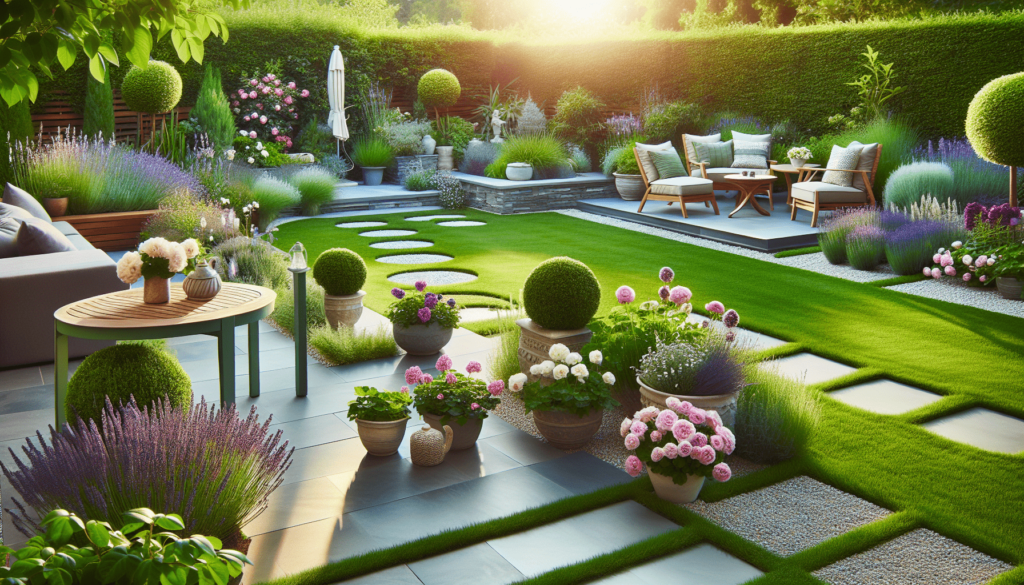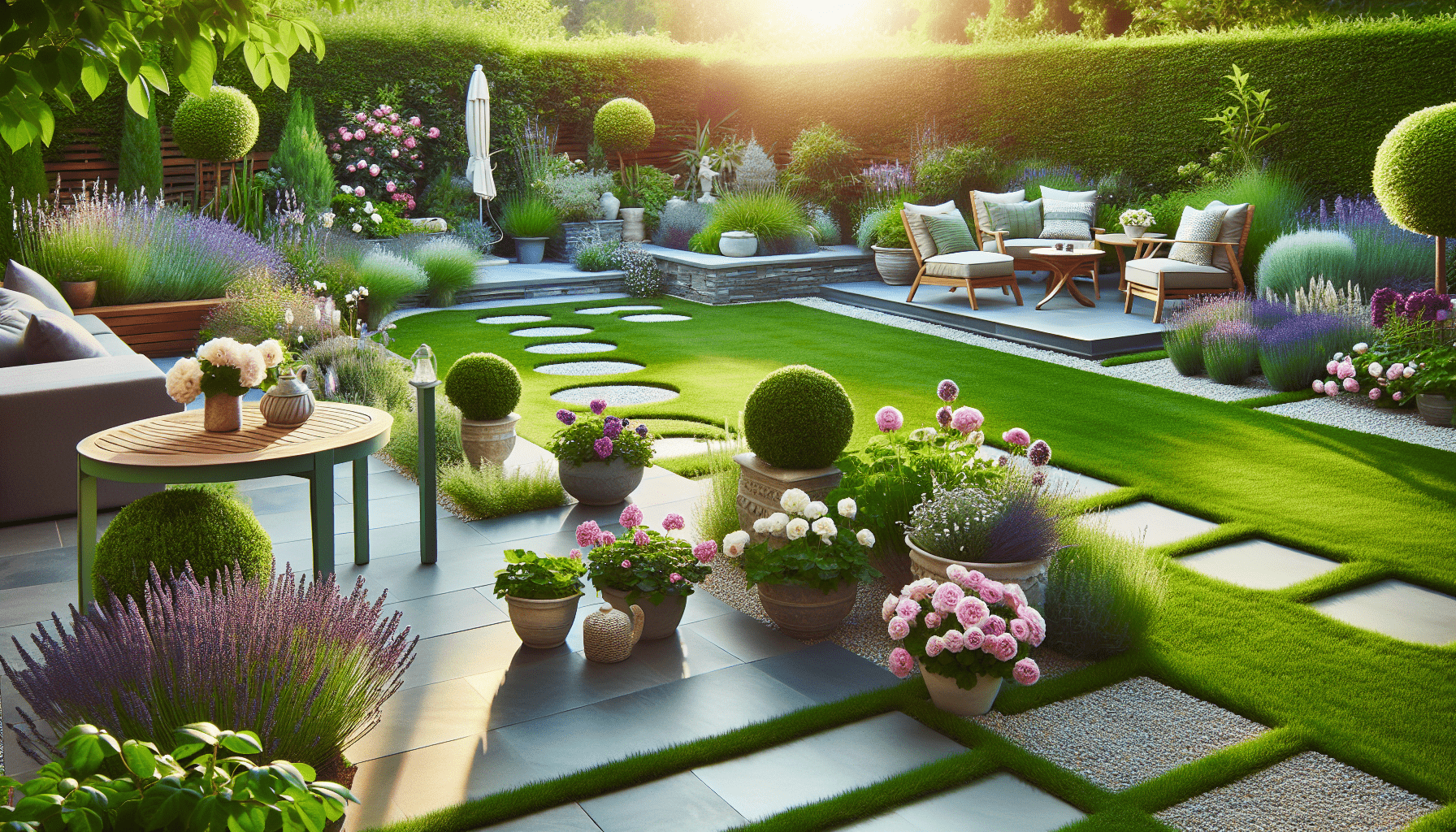Have you ever found yourself hesitating to step outside, even just for a moment, fearing the discomfort of sneezing, itchy eyes, or a runny nose? For many, the joy of outdoor living can be dampened by the presence of pollen and other allergens. Luckily, your outdoor space doesn’t have to be a trigger zone. With some thoughtful planning and effort, you can transform your yard or patio into a sanctuary free from the usual allergy culprits. Let’s dive into how you can create an allergy-free outdoor space, allowing you to enjoy the fresh air without the unwanted side effects.

Understanding Outdoor Allergens
Your first step to creating a pollen-free outdoor environment is understanding what you’re dealing with. Outdoor allergens can come from various sources, each with its own characteristics and challenges.
Types of Outdoor Allergens
The most common outdoor allergens include pollen, mold spores, and dust mites. Each of these can affect you differently, and understanding their behavior is crucial to tackling them effectively.
-
Pollen: This is a fine powdery substance released by plants during their reproductive cycle. Trees, grasses, and weeds are the usual culprits, each having a prime time of year for pollen release.
-
Mold Spores: These thrive in damp conditions and can be a problem in areas that are prone to humidity and poor drainage. Mold can grow on almost any organic material, making it particularly pervasive.
-
Dust Mites: Typically found indoors, but during certain times of the year or in specific conditions, they can be present in the cushions of your outdoor furniture or other soft furnishings.
Identifying Your Allergens
You might not be affected by all outdoor allergens. Identify which ones are most problematic for you—whether it’s pollen from nearby trees or mold from an overwatered corner of your yard—so you can focus your efforts effectively.
Designing an Allergy-Free Landscape
Once you have a solid understanding of your allergen foes, you can start designing your outdoor space to minimize their presence. Every decision you make, from choosing plants to landscaping, can have a significant impact on reducing allergens.
Choosing the Right Plants
One of the most effective strategies is selecting the right types of plants that emit less pollen.
-
Opt for Female Plants: Some plants, such as certain trees and shrubs, are dioecious, meaning they have separate male and female plants. Male plants release pollen, so always opt for female varieties, which produce seeds or fruits instead.
-
Incorporate Low-Pollen Plants: Choose plants that produce little to no airborne pollen. Some examples include begonias, azaleas, camellias, and roses.
Here’s a table of some plants to consider for an allergy-free garden:
| Plant Type | Low-Pollen Varieties |
|---|---|
| Shrubs | Azaleas, Boxwood |
| Trees | Dogwoods, Crepe Myrtles |
| Flowers | Begonias, Hydrangeas |
| Ground Cover | Ivy, Dichondra |
Limiting Lawn Allergen Exposure
While a lush, green lawn is appealing, it can often be a significant source of pollen. If you’re determined to keep your grass, there are ways to manage it to minimize allergens.
-
Use Grass Alternatives: Consider replacing traditional grass with alternatives such as clover, moss, or artificial turf, which do not produce pollen.
-
Regular Maintenance: Mow your lawn regularly to prevent it from growing tall and releasing more pollen. Also, keep edges and borders trimmed.
-
Limit Thatch Build-Up: Thatch is a build-up of organic matter that can harbor mold. Regularly rake and aerate your lawn to decrease this accumulation.
Managing Pollen and Dust
Keeping pollen and dust at bay involves several measures related to your outdoor space’s upkeep and maintenance.
Creating Physical Barriers
-
Install Shade Structures: Pergolas or shade sails can reduce exposure to pollen by providing a physical barrier.
-
Use Pollen Screens: Install pollen screens around porches and patios to keep the air cleaner.
Water Management
Mold thrives in moist environments, so keeping your outdoor space dry can significantly reduce mold spores.
-
Improve Drainage: Ensure that water doesn’t pool in your yard. Use methods such as installing French drains or rain gardens to help manage water.
-
Water Timing: Water your landscape in the early morning or late afternoon to avoid mold growth and loss of water from evaporation.
Furnishing and Decor
The materials you use for your outdoor furnishings can also contribute to an allergen-free environment. Here’s how to choose wisely.
Selecting Allergen-Resistant Furniture
-
Opt for Metal or Plastic: Furniture made from these materials doesn’t harbor dust mites as wooden or upholstered pieces might.
-
All-Weather Fabrics: Choose cushions and pillows that are made from synthetic materials like acrylic, which resist mold and mildew.
Regular Cleaning and Maintenance
Persistent cleanliness is a key factor in minimizing allergens.
-
Weekly Washing: Regularly wash fabrics and cushions to minimize dust and pollen accumulation.
-
Vacuum Regularly: Use a vacuum cleaner with a HEPA filter on any outdoor carpets or rugs.

Utilizing Technology and Tools
Technology can be your ally in creating an allergy-free space, providing ways to clean and purify the air.
Utilizing Air Purifiers
-
Outdoor Air Purifiers: Consider investing in outdoor air purifiers designed to reduce pollen and other allergens in large spaces.
-
Electrostatic Filters: These can effectively trap tiny particles and are ideal for outdoor use.
Maintaining Optimal Air Quality
Monitor the air quality of your outdoor space using air quality monitors that can give you real-time updates. Knowing when levels are high can help you plan activities accordingly.
Seasonal Considerations
Different times of the year can affect allergen levels, and preparation can help you manage these changes.
Spring and Summer
-
Pollen Peaks: Pollen levels are usually highest in late spring and summer. Try to do major garden work in late afternoon when pollen levels drop.
-
Early Bloomers: Plant early-blooming plants to reduce pollen load as well.
Fall and Winter
-
Reduce Debris: Fallen leaves can become a haven for mold. Keep spaces clear as much as possible.
-
Cover Furniture: Use protective covers for furniture during off-seasons to prevent dust and mold accumulation.
Engaging the Community
Finally, consider how your environment and your neighbors’ activities might affect your overall strategy.
Community Efforts
Patrol the neighborhood to see if others are inadvertently affecting your space. Community garden seminars can offer advice and shared practices to tackle pollen on a larger scale together.
Open Dialogue
Discuss with neighbors who may have high-pollen plants close to your border to see if adjustments can be made to benefit everyone involved.
Conclusion
Creating an allergy-free outdoor space is entirely achievable with a bit of planning, some strategic choices, and ongoing maintenance. Each step you take moves you closer to a sanctuary where you can breathe easily and enjoy every moment outside without the discomfort of allergies. By taking control of your surroundings, you can dramatically enhance the quality of your outdoor living experience. Now, it’s time to let nature in—on your terms!
